Etudes For Piano Book Ii: A Ragtime Odyssey
Etudes For Piano Book Ii: A Ragtime Odyssey
Piano Solo
Composer's Note:
This work, initially written between 1992 to 1993 (the last work being completely re-written in 2022), is the second volume of a two-volume set of ten Études dealing with compositional, rather than technical, considerations.
These are not the first set of Ragtime Études. The first (and to my knowledge, the only other) was published between 1913 and 1920. They were entitled Pastime Rags (numbers one through five) and were written by Artie Matthews. These works dealt with such technical concerns as walking bass, chromaticism, and chord clusters.
My Ragtime Études have more prosaic titles than Matthews' works and are more concerned with compositional problems such as injecting an older style with modern elements, collaboration between composers, and using pre-existing material as a basis for a new work. All of these works are inspired by places which I have either visited or lived in, and attempt to create a sense of a musical saga. It is hopefully less pretentious than Richard Strauss' Ein Heldenleben.
The overall structure of the work is from least deviant from the form to the most, starting with the middle (Number 3), to Number 2, to Number 4, to Number 1, to Number 5. The key structure of the opening sections of each piece in chronological order is Bb to C to Ab to E to D, which makes up most of a whole tone scale.
PAD THAI AND SALA (1993) is named after a favourite dish of mine at The Magic Kitchen, a Thai Restaurant on the outskirts of Springfield, Illinois. Pad Thai is a peanut vegetable dish and Sala is a sweet, red syrup well-suited to quelling the effects of the spiciness of Thai food. The style is a "Tango-Rag," a hybrid form influenced by the music of the Americas developed in such pieces as Ferdinand "Jelly Roll" Morton's The Crave, or Jess Picket's The Dream. I attempted to meld this style with bitonality and chromaticism -- elements of a different era. I have dedicated this work to Dr. Zack Browning, my teacher and thesis advisor at the University of Illinois at Urbana-Champaign.
VOODOO QUEEN (1992) is named after Marie Levaux, the famous nineteenth century Voodoo Queen of New Orleans, who apparently exerted a powerful influence over its citizens. The work is a collaborative rag. At my behest, Alabama-born composer Donald Ashwander (1929 -- 1994) wrote the first two sections, and the repeat of the "A" section. Donald was very enthusiastic about the idea when I initially asked him. Although what follows Donald's sections (which was written by myself) is very different in style, it could not have existed without the previous sections. Most of the melodic material is derived, in one way or another, from the section(s) composed by Donald. For this reason, it remains a coherent work, despite the apparently two divergent styles. It also does a harmonic full circle of thirds from C minor, to Eb minor, to F# minor, to A minor, back to C minor at the end.
400 RONCESVALLES AVENUE (1992) is the address of the historic Revue Cinema in Toronto, Canada. The way to approach the theatre from downtown is to take the subway eastbound to the Dundas West Station, and from there, one would take the streetcar to the theatre. These are depicted musically at the beginning, in the middle, and at the end of the work. The third and fourth sections of the work quotes heavily from Bruckner's eighth symphony. The reason for this, is that it was while I was living in Toronto that I became familiar with the genius of Anton Bruckner. I regret to say that I have no recollections of seeing any interesting films at the Revue Cinema. Finally, it is dedicated to the memory of Salvatore Martirano, my teacher at the University of Illinois at Urbana-Champaign, who expressed a liking for the piece, and suggested just a tiny change in the third section, which made it better.
PLEASANT POINT -- RAG VERISMO (1993) is the second piece with this title. The first was an early work, best forgotten. Pleasant Point is a very small township consisting mostly of cottages, just outside of Timaru, which is a small town on the southern end of the South Island of New Zealand. It was here, during summers early in my life, that I spent my happiest moments in New Zealand. I stayed with Myra Vance, a family friend of my mother's from the 1930s and 1940s, and with whom we stayed for three months when we moved to New Zealand in 1970. Parenthetically, my mother was born in New Zealand, later moving to Canada where she met my father. Myra became like a surrogate grandmother to me. Everything in her house was historical. The house, the wind-up gramophone, the old wheezing harmonium in the parlour, the books, the bookshelves, the beds, the furniture, and her fabulous garden. I would often hide up in an old treehouse, listening to classical music broadcast by Radio New Zealand. Myra's cottage was in Pleasant Point. There was another wind-up gramophone there, with some old Enrico Caruso records, arguably my first musical experience. For that reason, the entire melodic and harmonic foundation of this rag owes a great deal to the Vesti la Gubbia arioso from Leoncavallo's opera, Pagliacci, (which I had never heard Caruso perform when I wrote this work but is nonetheless the song most associated with Caruso). You will hear quotes and references to it everywhere, but especially in the second section. Myra Vance, like Grandma Moses, started painting late in life, and though in her eighties when I wrote this rag, she had had several exhibitions, some internationally. In her lifetime, this was dedicated to her; now it is dedicated to her memory.
THE TAYLOR ROAD -- TUPELO -- FAULKNER ALLEY-- ROWAN OAK RAG-WALTZ (2022): The first version of this rag was composed in 1993. It was thrown out and a completely new piece composed and put in its place in 2022. Taylor, Mississippi (about eight miles north of Oxford, home to "Ole Miss" University), has one of the best catfish restaurants in all of Northern Mississippi, at the Taylor Grocer and Restaurant, a dilapidated old building when I visited there in 1992. A sign inside the restaurant had been changed from "fried catfish" to "fried cat shit" and no one had bothered to change it back. Tupelo is the birthplace of Elvis Presley, and is east of Oxford, Mississippi. The Tupelo museum is a wonderful storehouse of information, and made a big impression on me when I visited there. Faulkner Alley was (and possibly still is) next to the Harvest Restaurant, an outstanding vegetarian restaurant in downtown Oxford. The building originally housed a Pharmacy that author William Faulkner used to go into all the time to review his own manuscripts. Rowan Oak is now a museum but was the home of author William Faulkner. When I visited, I pointed out to the guide/curator that he had a similar jacket and moustache to that of Faulkner. He smiled and took out a pipe which he was said was also similar to Faulkner's!
Movements: I. Pad Thai & Sala, II. Voodoo Queen, III. 400 Roncesvalles Avenue, IV. Pleasant Point - Rag Verismo, V. The Taylor Road -- Tupelo -- Faulkner Alley -- Rowan Oak Rag-Waltz
Authored (or revised): 1993
Published: 1993
Duration (minutes): 25
Book format: Score
SKU
ACA-DAVM-020Subtotal
$40.00Couldn't load pickup availability
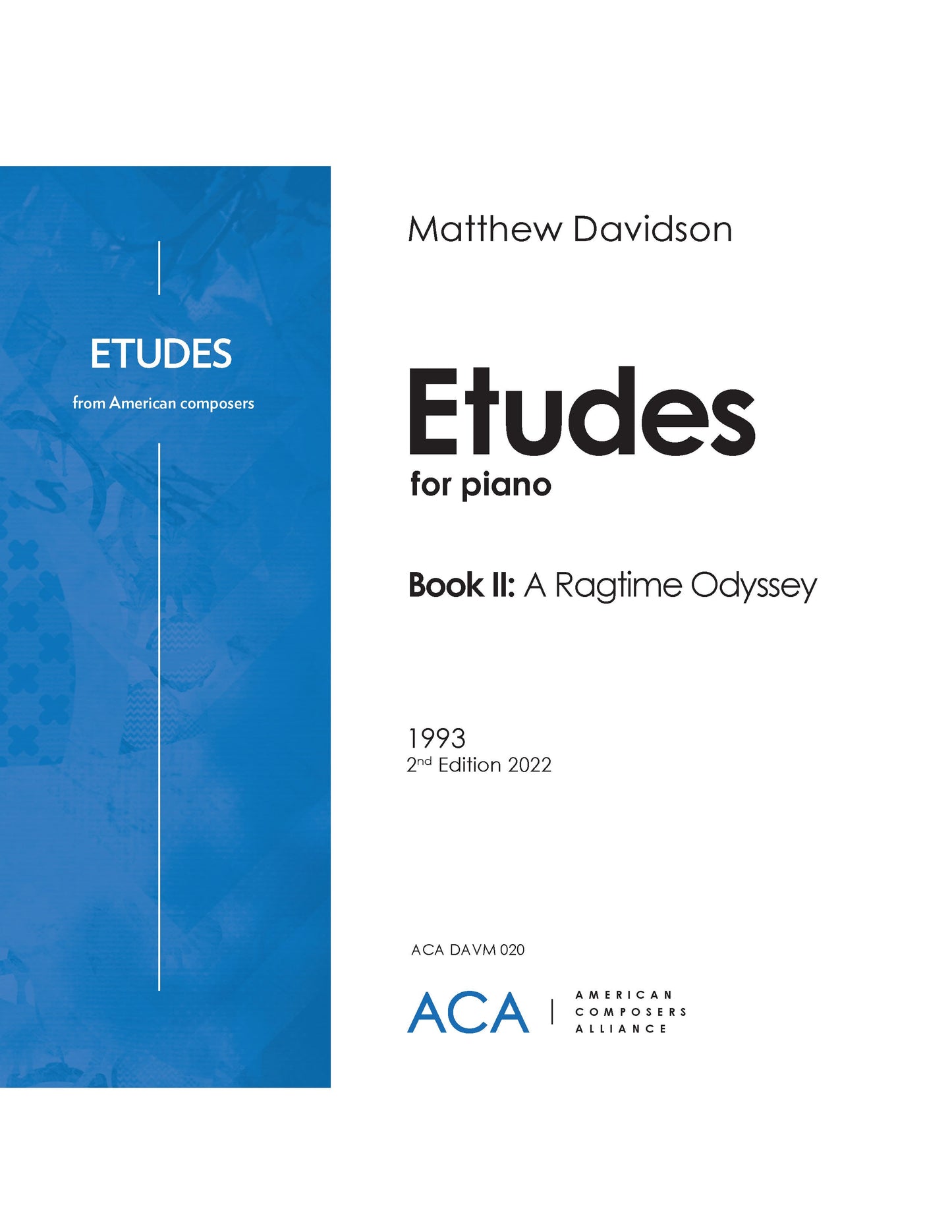
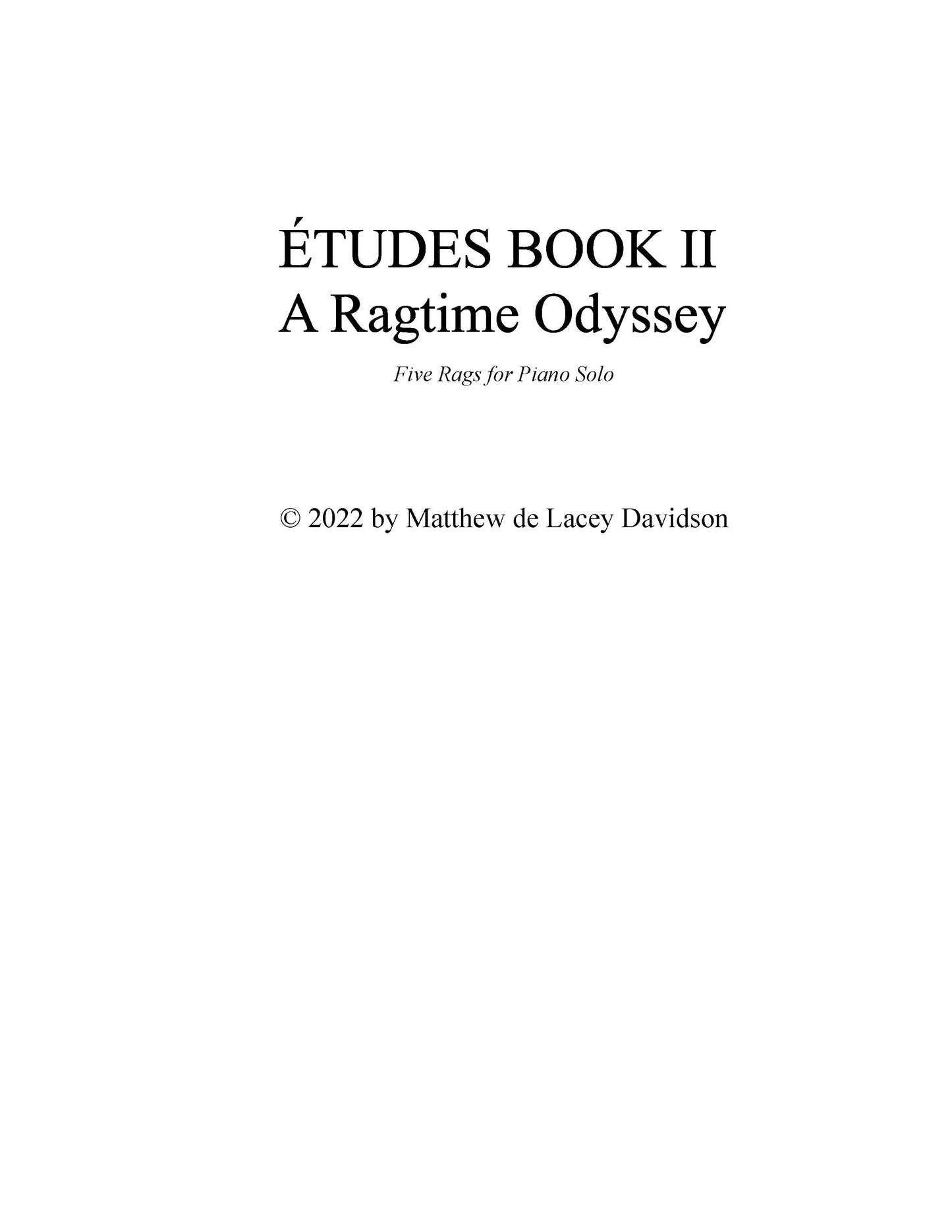
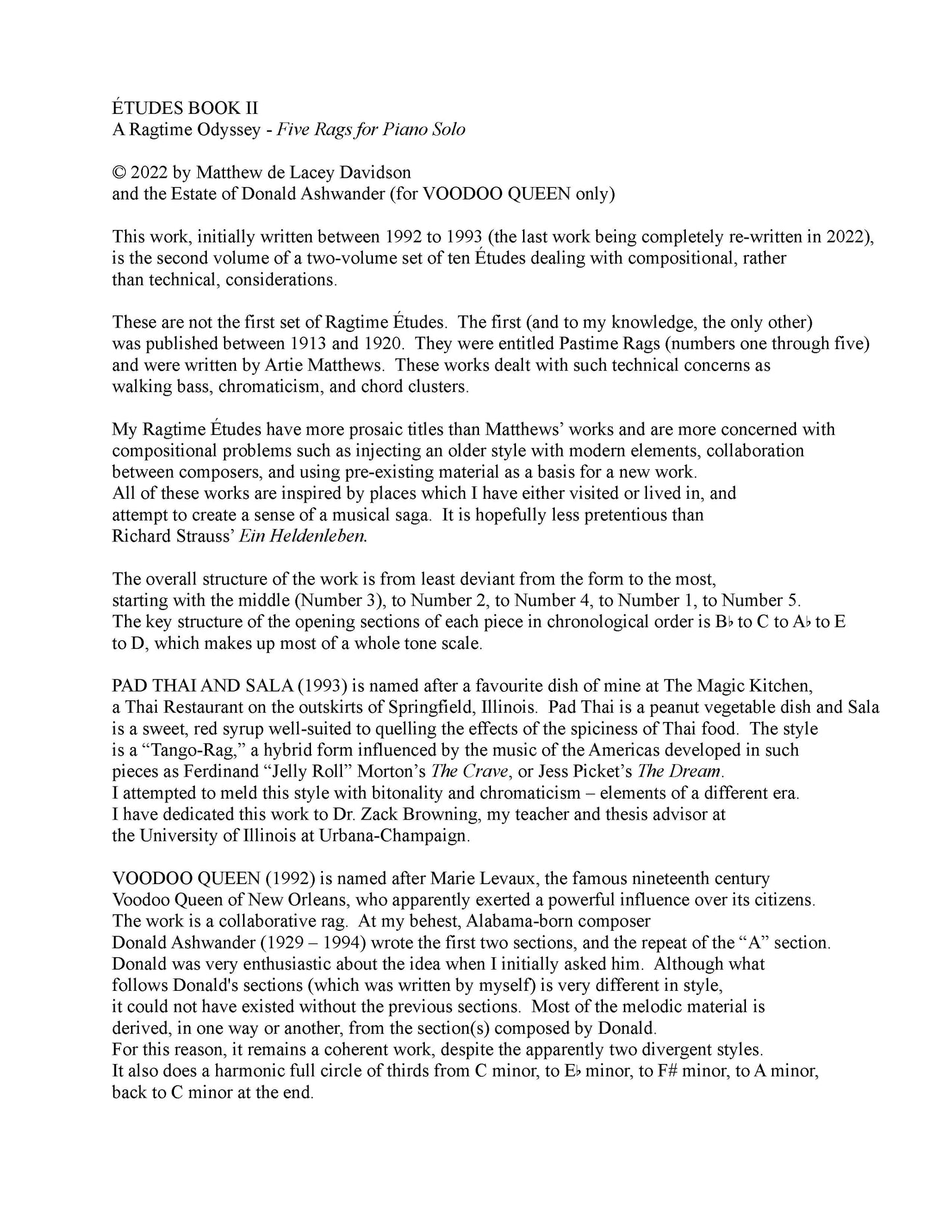
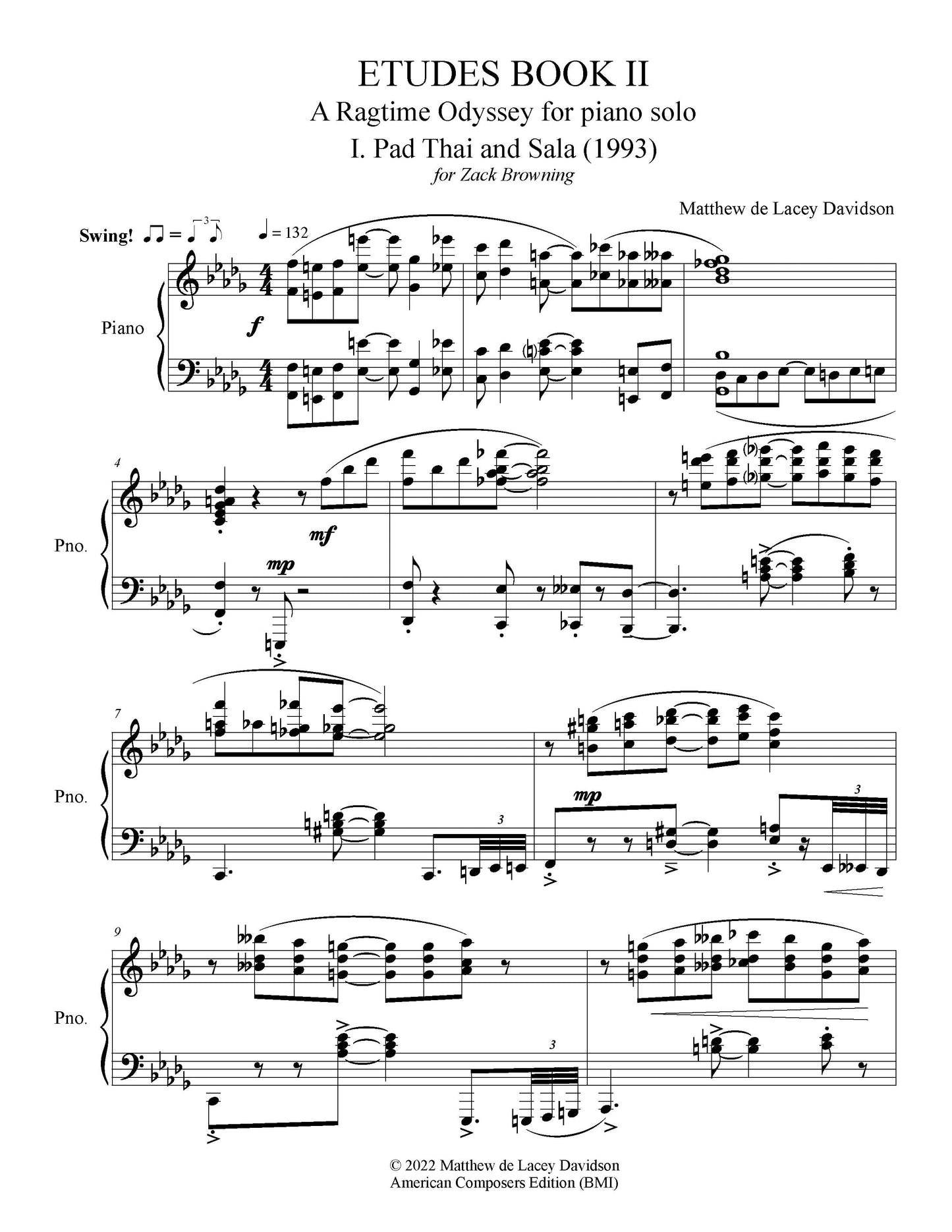

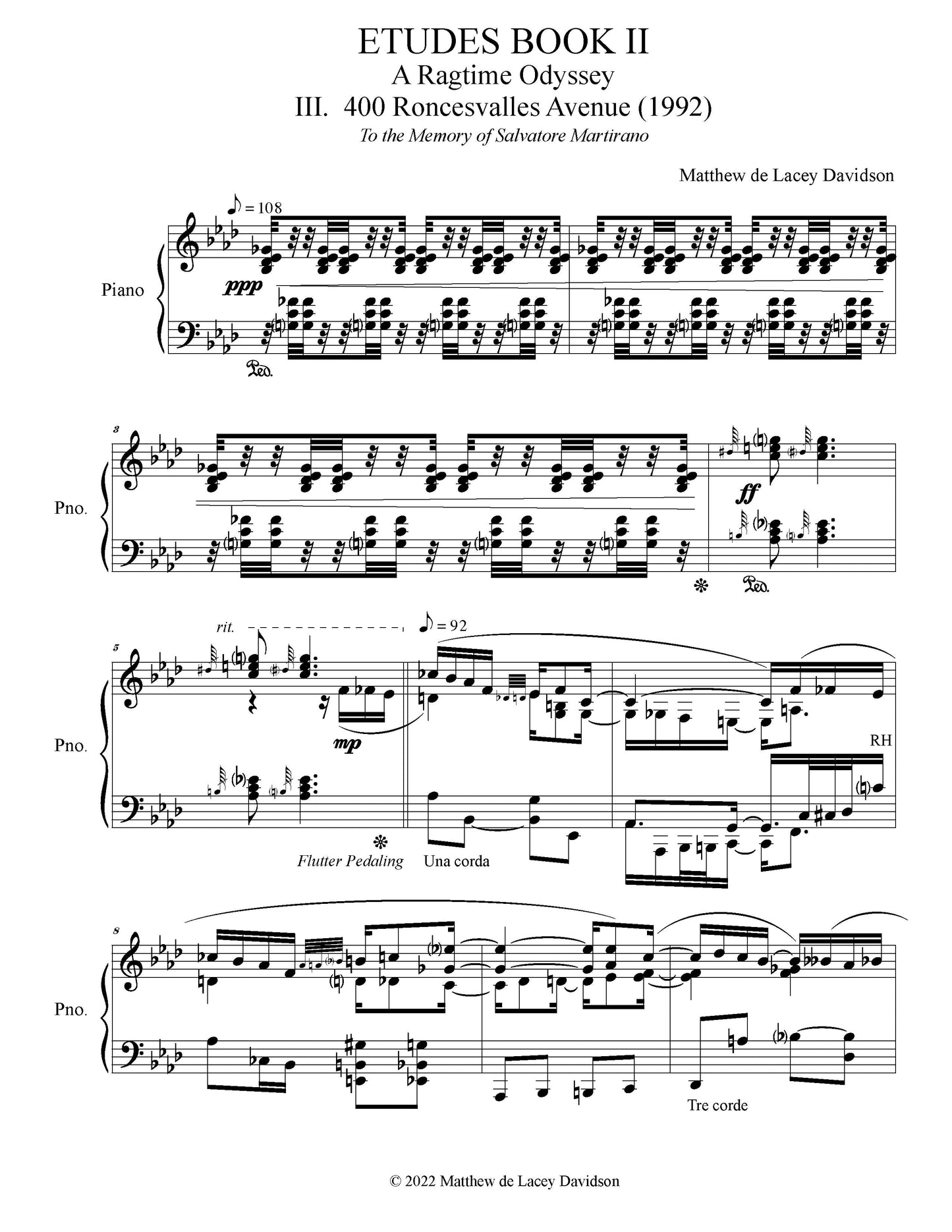
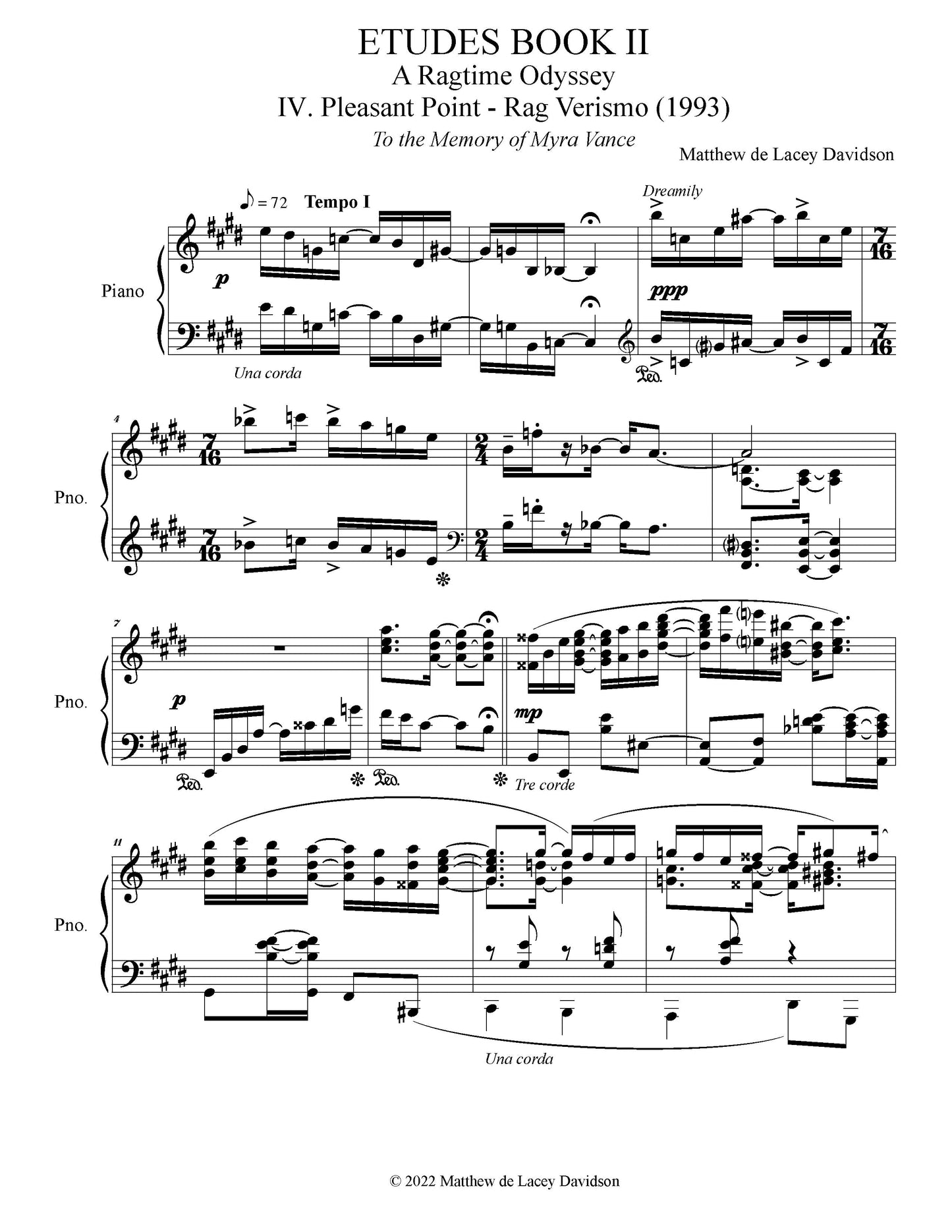

PDF Download Policy
Shipping and Returns
Purchasing digital PDFs from American Composers Edition grants you an exclusive license for your own use of the files, including performance, as well as permission to duplicate the score and files as required for that purpose. Any other use, including commercial recording, may require an additional license. PDF files are not refundable and are permanently licensed to the buyer.
Shipping
You may choose your shipping method on checkout.
In the USA we usually use USPS Priority Mail or Media Mail or UPS Ground services. We ship worldwide using US International Postal Mail Priority, First Class International Mail, or UPS Global.
Return Policy
Orders received damaged will be replaced at no additional charge. Refunds requested will be issued back to the original payment method.








